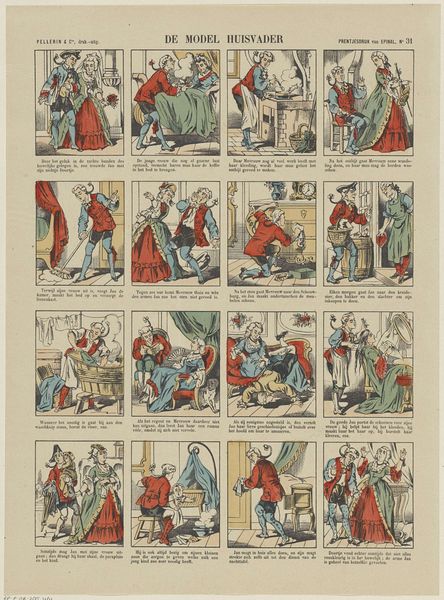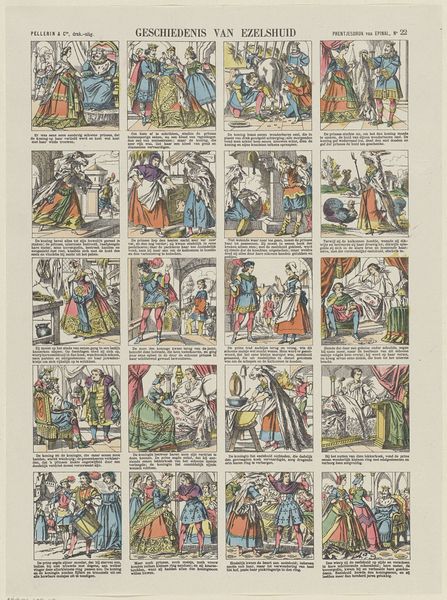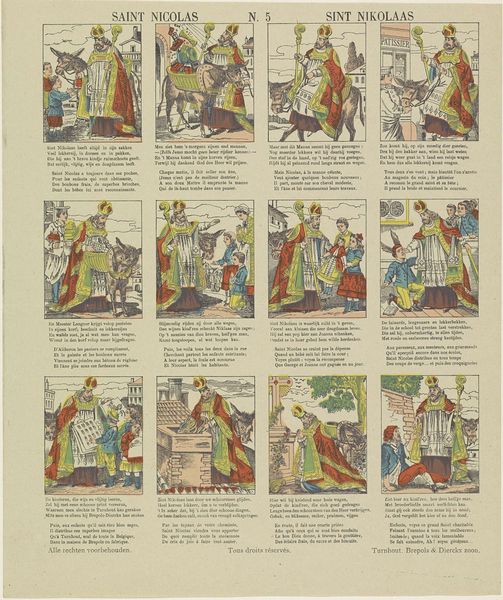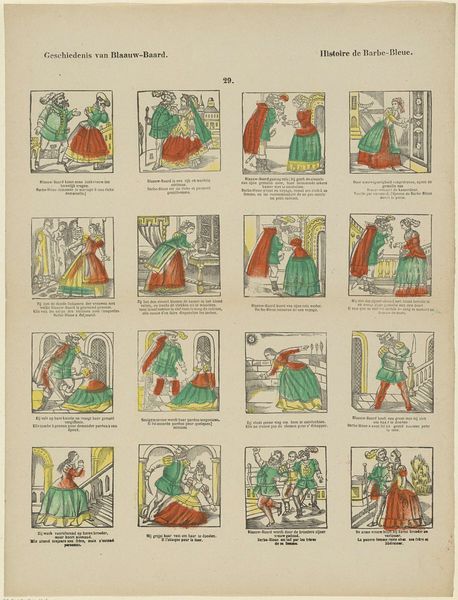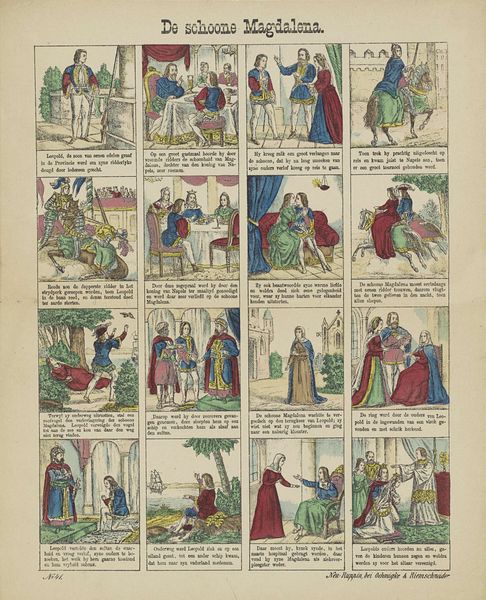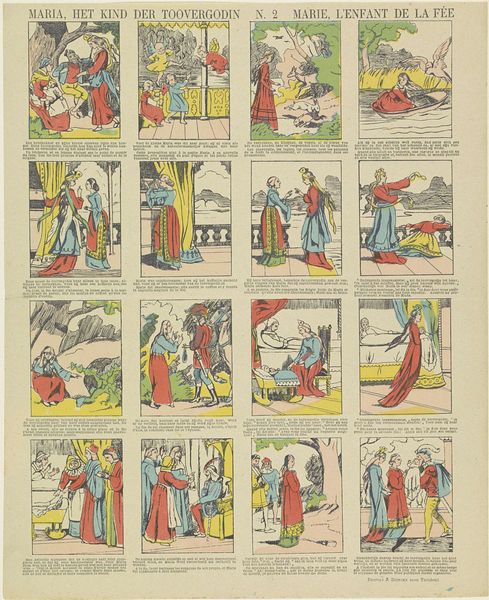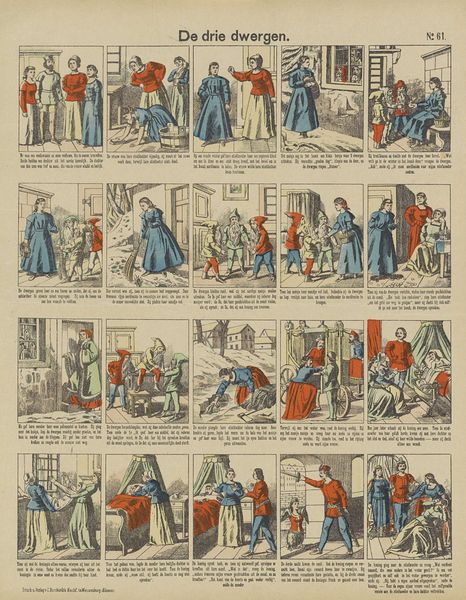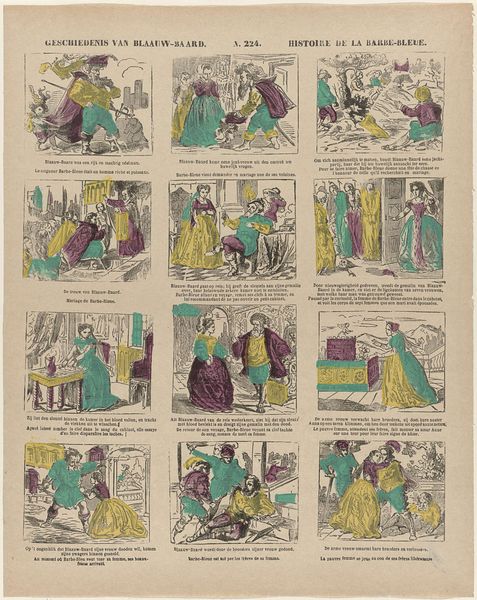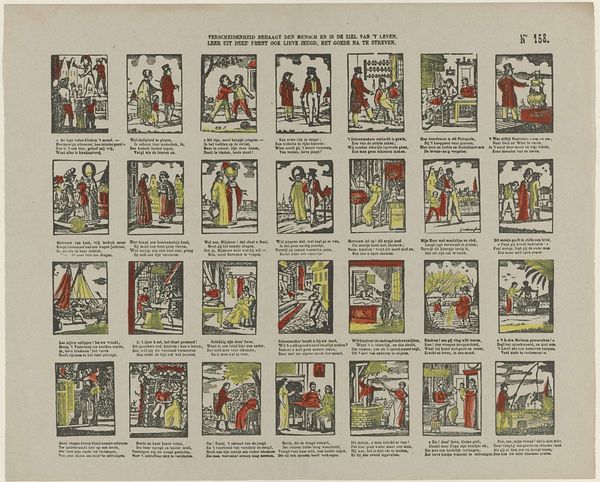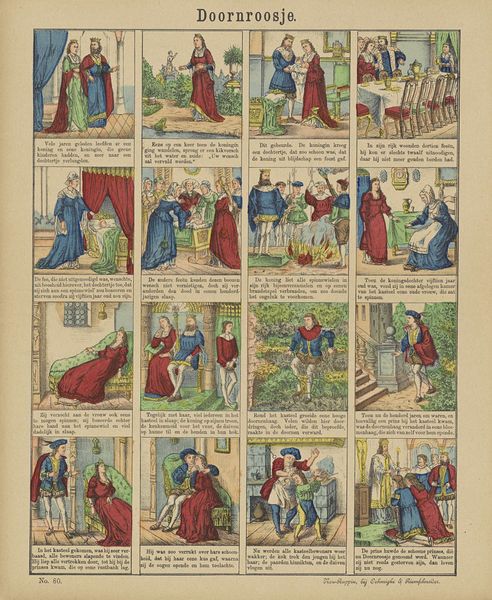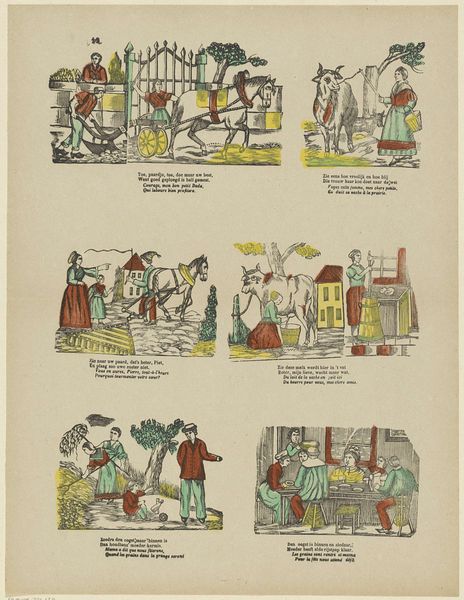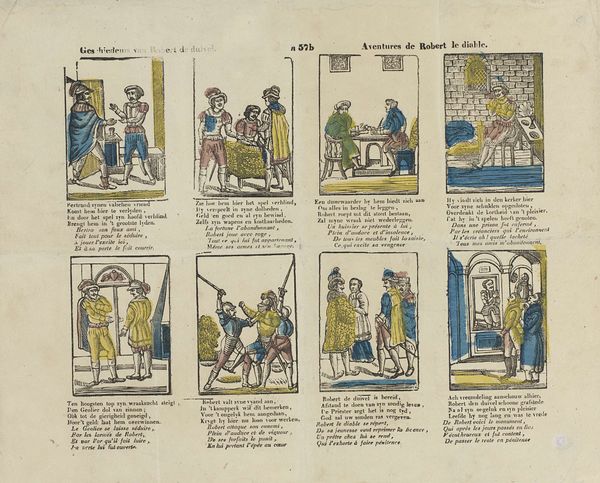
Geschiedenis van moeder Moreau en van haren wonderbaren hond / Histoire de mère Moreau et de son chien merveilleux 1833 - 1911
0:00
0:00
#
narrative-art
# print
#
dog
#
traditional media
#
folk-art
#
genre-painting
Dimensions: height 288 mm, width 385 mm
Copyright: Rijks Museum: Open Domain
Curator: Here we have "Geschiedenis van moeder Moreau en van haren wonderbaren hond / Histoire de mère Moreau et de son chien merveilleux," a print from between 1833 and 1911, currently held at the Rijksmuseum. It’s reminiscent of a children's book, with these sequential scenes depicting a woman and her, shall we say, extraordinary dog. What strikes you about this particular piece? Editor: Well, it looks almost like a comic strip, and I'm intrigued by the level of detail considering it’s a print. How did the materials and production affect its reach and reception at the time? Curator: That's a great starting point. The fact that it's a print, likely a woodcut or engraving, immediately tells us about its potential for mass production. This wasn't high art meant for the elite, but rather something more accessible. Think about the materials – paper and ink. Relatively inexpensive, allowing for wider circulation among a burgeoning literate, or semi-literate, population. Editor: So it’s all about reaching a larger audience? Was the narrative geared towards a specific social class or demographic? Curator: Exactly. We need to consider the social context in which this print was made and consumed. Folk tales and simple narratives were very popular amongst the working class. The recurring motifs related to animals can make a specific focus to the working or rural class. Now, consider the repetitive imagery – what kind of labor went into creating such a piece, and for whom? Editor: I suppose someone had to carve each scene, and others were involved in the printing process itself... making it relatively easier to reproduce many times, that is. The materiality makes me question its value as "art", then. Curator: Precisely. And that challenges our traditional definitions of "high" art. It encourages us to think about art not just as individual genius, but as a product of collaborative labor, made possible by specific materials and techniques, circulating within a particular social context. Is art essentially an expensive painting in a golden frame? Or an inexpensive medium that everyone can enjoy? Editor: That’s fascinating. It shifts the focus from the individual artist to the entire system of production and consumption. I guess I hadn't really considered that art could be, and often is, a product of shared labor. Curator: It forces us to be critical of who decides what art is and for whom. It truly reframes my view on this seemingly simple print, knowing about these influences.
Comments
No comments
Be the first to comment and join the conversation on the ultimate creative platform.

